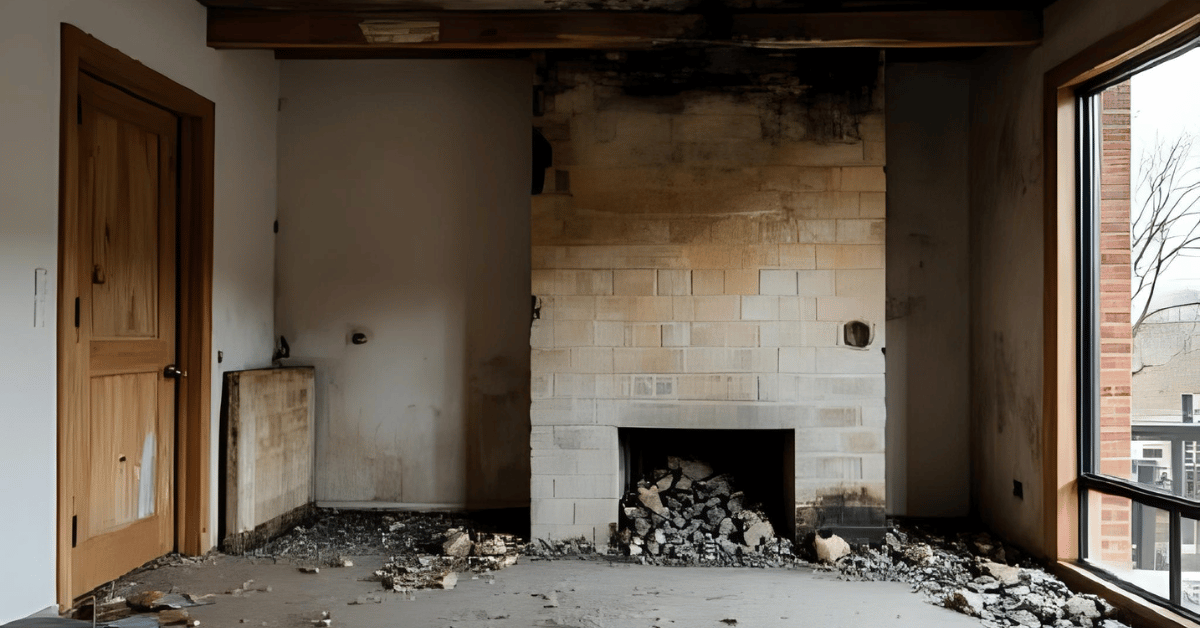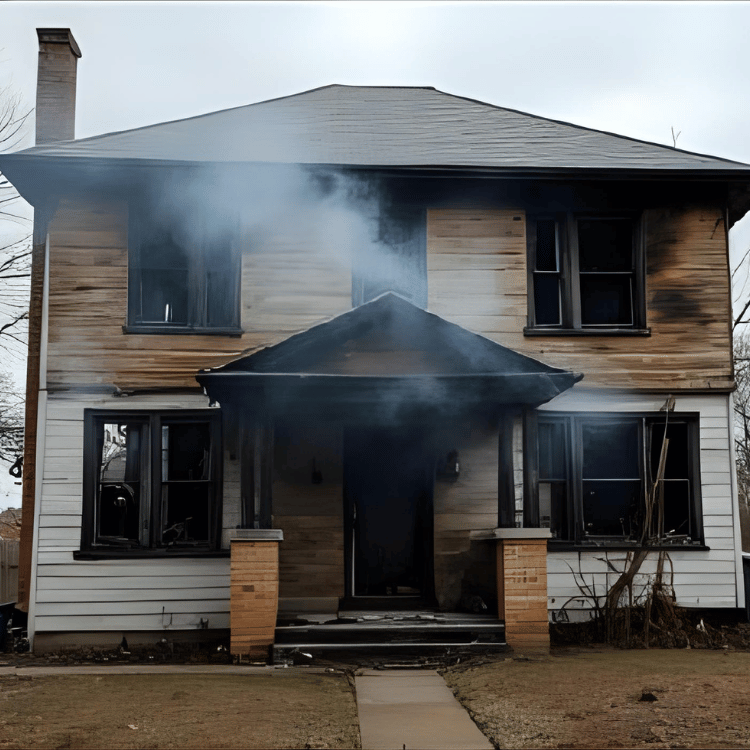Fire is swift. Restoration isn’t. For businesses and homeowners alike, the aftermath of fire involves more than visible soot or charred walls. It’s a systematic process—one that requires careful coordination, time, technical knowledge, and proper remediation. Fire damage restoration, when handled with precision and urgency, minimizes long-term loss and brings a property back into safe, functioning condition.
K&P Restorations specializes in Fire damage restoration, mold inspection, testing, removal, and remediation services. We also provide fire & smoke remediation, water mitigation & remediation, crawl space cleaning, and HVAC vent cleaning services. Based in Macon, Georgia, we proudly serve the surrounding communities. We can be reached at (478)-256-3394.
Let’s examine how fire damage restoration works and why it’s an essential part of post-incident recovery for both commercial and residential structures.
Understanding the Scope of Fire Damage Restoration
Before any cleanup begins, it’s essential to understand what fire damage restoration actually encompasses. It isn’t just about removing visible burn marks—it’s about structural integrity, indoor air quality, water intrusion from firefighting efforts, smoke contamination, and hidden damages beneath the surface. This process must be executed with a structured, professional approach, not piecemeal.
From initial site inspection to complete recovery, restoration requires extensive technical steps:
- Assessing structural safety
- Determining material salvageability
- Removing charred debris
- Extracting residual water from firefighting
- Air scrubbing for smoke and soot particles
- Rebuilding affected areas
And while timelines vary, delay often results in additional complications—mold growth, corrosion, or further breakdown of interior systems.
First Steps in the Fire Damage Restoration Process
After the fire has been extinguished and it’s safe to enter, the restoration process begins. Each property requires a custom approach, but the beginning steps remain similar across the board. K&P Restorations typically initiates with a walkthrough and property evaluation.
Initial Inspection and Safety Protocols
A detailed inspection helps document all visible and underlying damage. Restoration experts examine:
- Load-bearing walls
- Roofing and attic structures
- Electrical wiring and paneling
- Insulation
- HVAC systems
- Plumbing and fixtures
Safety is the primary concern. No work begins until the structure is confirmed as safe for entry.
Damage Documentation for Insurance Claims
Accurate records are indispensable for insurance adjusters. Restoration professionals often photograph damage, sketch layouts, and record losses in a detailed scope report. This documentation is shared directly with insurers to help fast-track the claims process. The transparency of this phase benefits both insurers and property owners, providing clarity on what’s being restored or replaced.
Water Removal: A Critical Yet Overlooked Stage
Ironically, many structures endure more water damage than fire damage. Firefighters often soak walls, ceilings, floors, and furniture to contain a blaze. That water doesn’t just evaporate. It seeps deep into wood, drywall, and insulation—creating a breeding ground for mold and rot.
Dehumidification and Dry-Out Services
K&P Restorations uses industrial-grade dehumidifiers, extraction equipment, and air movers to dry soaked spaces efficiently. This prevents secondary damage such as microbial growth or structural warping. Thermal imaging and moisture meters detect hidden pockets of moisture behind walls or under floors.
Failing to dry thoroughly often leads to expensive remediation later. That’s why this stage can’t be rushed or skipped.
Soot and Smoke Residue: Invisible Yet Damaging
Soot and smoke are acidic. They continue damaging surfaces long after the flames are extinguished. Metals corrode. Paint bubbles. Upholstery and fabrics absorb persistent odors. Worse, inhalation of soot particles may be hazardous.
Removing Residue From Surfaces
Specialized equipment, including HEPA vacuums and air scrubbers, are used to remove soot without spreading contaminants. Depending on the material, surfaces may require:
- Soda blasting or dry ice blasting (for brick or concrete)
- Chemical sponges (for drywall or painted surfaces)
- Enzyme treatments (for porous surfaces like upholstery or rugs)
Smoke residue inside HVAC systems is addressed using duct cleaning tools to prevent recontamination.
Smoke Odor Neutralization
Smoke smells are stubborn. K&P Restorations uses hydroxyl generators and thermal fogging to neutralize odors embedded in wall cavities, wood framing, and insulation. These tools reach areas standard cleaning can’t, restoring breathable air quality without masking the issue.
Structural Repairs and Rebuild
Not every component can be cleaned or restored. When damage exceeds salvage thresholds, replacement is required. This includes:
- Drywall removal and replacement
- Framing and insulation
- Cabinetry, counters, and flooring
- Electrical panel rewiring
- Roof sections or ceiling joists
Restoration experts coordinate these trades to ensure local code compliance and structural safety.
How Fire Damage Restoration Differs in Commercial vs Residential Buildings
Residential projects tend to focus more on comfort, salvaging personal belongings, and returning families home. Commercial spaces often prioritize reopening quickly to limit revenue loss.
Common Differences Include:
- Scale and square footage
- Industrial materials (steel beams, concrete floors, commercial HVAC)
- Equipment and machinery loss
- Local regulations on re-occupancy and business permits
K&P Restorations is equipped to handle both, working closely with business owners and homeowners to meet restoration goals without compromising quality.
Regulatory Compliance and Environmental Considerations
Fire damage restoration isn’t just about rebuilding. It’s about doing so within the parameters of safety codes, EPA regulations, and health requirements. Older structures may contain asbestos or lead paint, which requires certified removal procedures.
Additionally, disposal of charred materials must be done in accordance with environmental waste standards. K&P Restorations maintains these procedures rigorously, ensuring projects don’t violate city or county guidelines.
Fire Damage Restoration: Common Misconceptions
Some misconceptions can cause delays or exacerbate damage. Here are a few that need to be clarified:
- “Smoke damage is just cosmetic.”
False. Smoke can corrode electrical systems and infiltrate insulation. - “I can clean up with household products.”
False. Many commercial cleaning agents react with soot, worsening stains. - “If it looks dry, it’s dry.”
False. Moisture meters often detect hidden dampness long after surfaces feel dry. - “Insurance covers everything.”
Not always. Policies vary. Without proper documentation, claims may be denied.
Why Timeliness Matters
Waiting too long to begin restoration compounds the damage. Mold sets in within 48 hours. Metal rusts. Wood warps. Electrical systems corrode internally. Smoke and soot penetrate further with time.
The faster a professional team like K&P Restorations is brought in, the more materials can be saved, and the overall cost of repairs stays lower.
What to Expect from a Fire Damage Restoration Partner
Choosing a professional restoration company shouldn’t be an afterthought. Your provider should offer:
- 24/7 emergency response
- Transparent estimates and timelines
- Direct insurance coordination
- Industry-certified technicians
- Use of advanced cleaning equipment
- Clear communication throughout the process
You’ll want a team that treats your property like their own—invested in not just repair, but full recovery.
FAQs
How long does fire damage restoration take?
It depends on the severity of the damage. Minor jobs can take a few days. Major rebuilds can span several weeks.
Is it safe to stay in the home during restoration?
Not usually. Exposure to smoke, soot, and structural instability can pose health and safety risks.
Can personal belongings be salvaged?
Yes, in many cases. Items are cleaned and restored using ozone treatments, enzymatic solutions, and other methods.
Does homeowner’s insurance usually cover fire damage restoration?
Most policies do, but coverage may depend on the cause and extent of the damage. Always review policy details or consult your adjuster.
Are all smoke odors removable?
In most cases, yes. But it requires professional-grade equipment and proper deodorization techniques—not just air fresheners or sprays.
Ready to Take the Next Step Toward Recovery?
K&P Restorations is your trusted provider for Fire damage restoration in Macon, Georgia and surrounding areas. Our certified technicians bring the tools, experience, and urgency required to get your property restored quickly and safely. We also provide mold inspection, testing, removal, and remediation services, along with fire & smoke remediation, water mitigation & remediation, crawl space cleaning, and HVAC vent cleaning.
If your property has suffered damage, don’t wait. Contact us or call (478)-256-3394 to schedule an inspection or emergency visit today.


